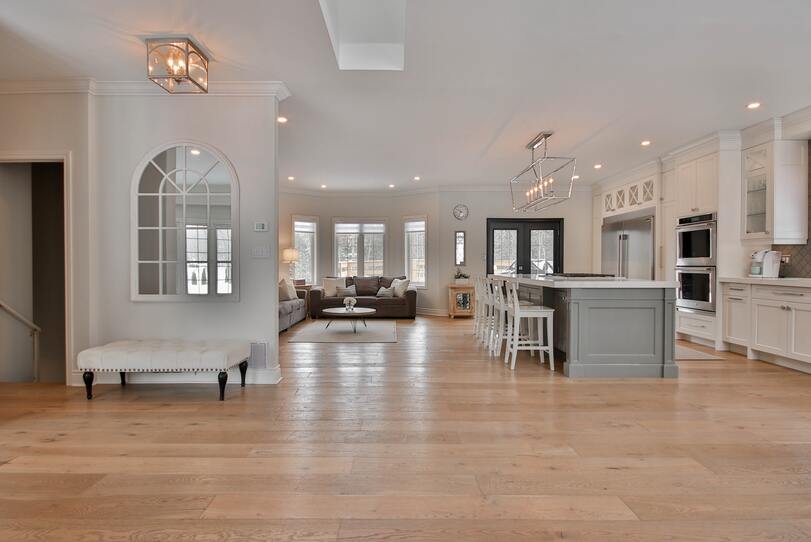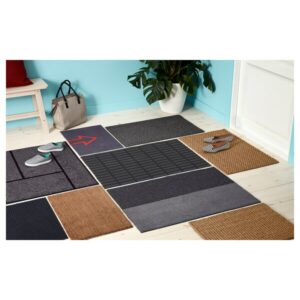When you enter a house for the first time, your eyes immediately go to the floor of the house. It is a crucial part of the house that cannot be overlooked. The floor of the house is something that brings the look of the house together. It is a reflection of your taste and aesthetics. Each type of flooring has unique features and benefits to offer.
A wide variety of flooring options are available such as Vinyl, cement screed, tiles, natural stone, wooden, etc. It is important to study each type in detail so that you can decide which one is best suitable for you. You can even hire a professional to help you select the right flooring for your home!
NATURAL STONE
Stone has always been a popular choice in homes, hotels, and large spaces. Natural stones give a very stylish look. There are three options in the type of stone that you can use- Marble, Granite, and Slate.
Marble offers a very sophisticated and shiny appearance. Apart from being used on the floors, you must have seen wall cladding with marble and countertops, and does it not look fabulous? Marble is the epitome of elegance. One can choose from either Indian marble or Italian marble for flooring.
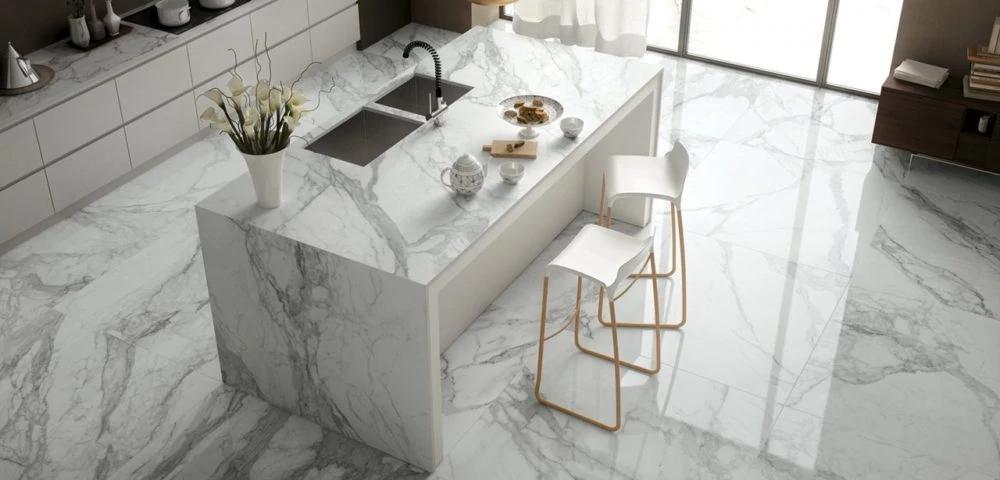
Image source: Shopify
Granite is similar to marble but it is low maintenance due to its capability of absorbing acidic substances. It is not porous and thus is protected from stains. Granite comes in many patterns and colors. A non-slippery, rustic, and less shiny option is slate. Slate is one of the strongest standard stone flooring materials.
Pros of Natural Stone:
- Granite is stainless
- Slate is less slippery
- Works well in moist areas
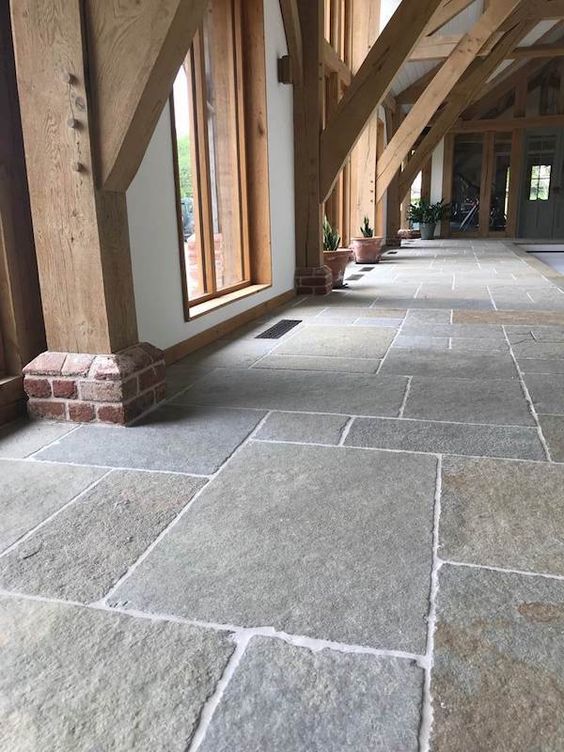
Image source: Pinterest
Cons of Natural Stone:
- High maintenance
- Needs to be sealed
- Marble is porous which can cause stains
- Prone to discolouration
- Marble isn’t scratch-resistant
WOODEN FLOORING
These days wooden flooring is extremely trending in all homes. It has the quality of adding warmth and character to the room. Also, checkout these amazing tips to keep your house connected to nature.
There are three types of wooden floorings:
- Hardwood
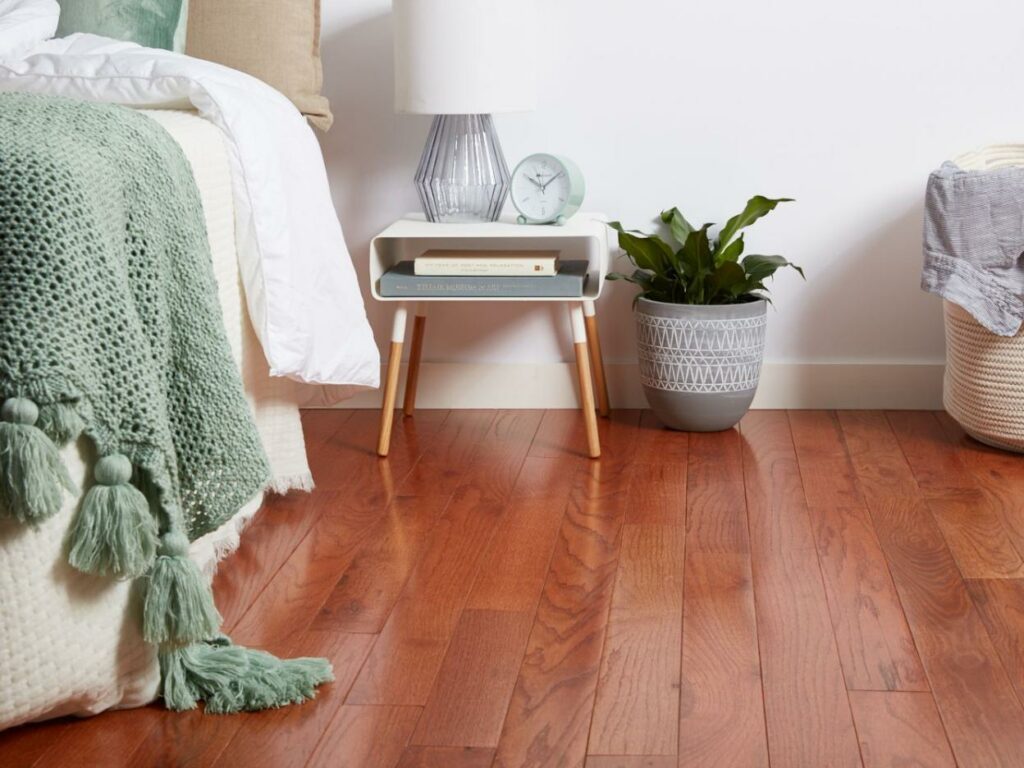
Image source: Pinterest
Hardwood flooring is made of solid wood throughout. Its sources include maple, oak, walnut, and cherry. It has a wide range of textures such as smooth, distressed, hand-scraped, and wire-brushed. It is very expensive and is not easy to maintain.
- Engineered wood
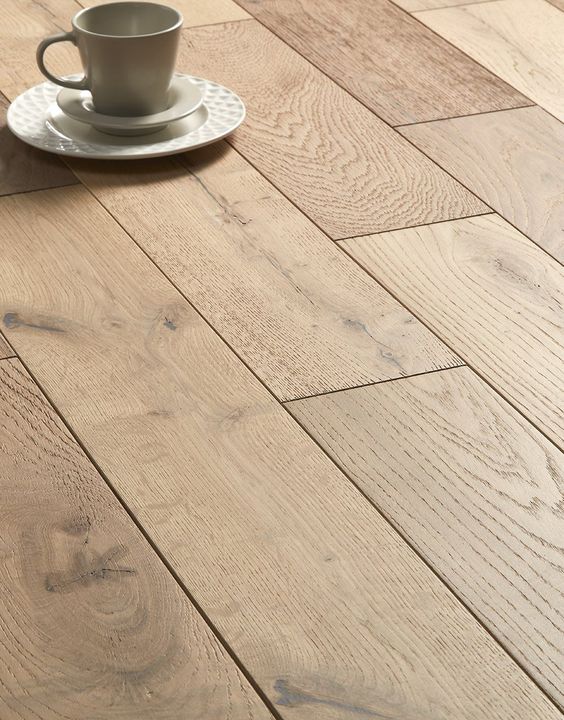
Image source: Pinterest
The composition of engineered wood is plywood. It is durable and more affordable.
- Laminate

Image source: Pinterest
A laminate is made of a wooden base with a layer of any pattern of your wish. It is very affordable and available in a variety of designs.
Pros of Wooden Flooring:
- Engineered wood is durable
- Laminate is affordable
Cons of Wooden Flooring:
- Laminate can get discolored
- Hardwood is expensive
TILES
Tiles are water-resistant and durable similar to vinyl. They thus become a popular choice for usage in bathrooms and other moist areas. Their composition includes either ceramics or porcelain. They are available in many designs and sizes. One shortcoming of tiles is that the gap between them is vulnerable to moisture which can lead to their decay. This can be avoided when protected/ sealed properly.
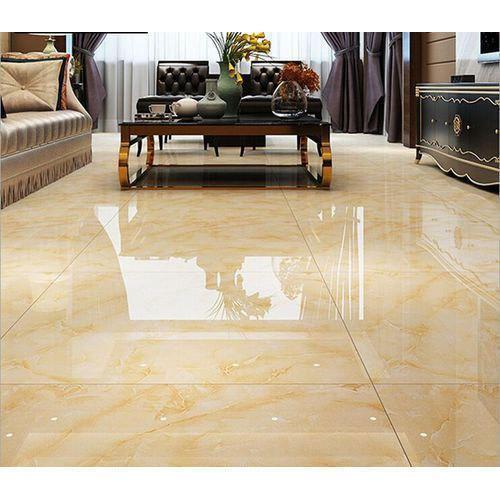
Image source: Pinterest
Pros of Tiles:
- Water resistance
- Durable
- No discoloration
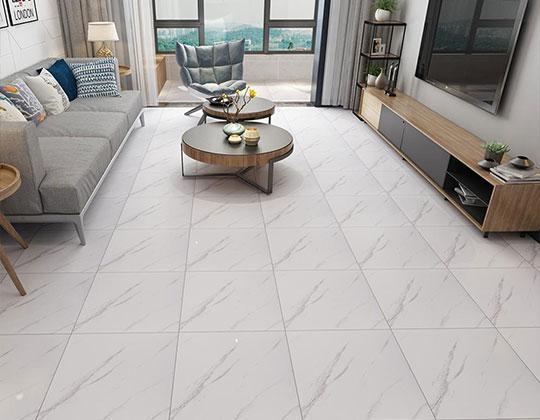
Image source: Pinterest
Cons of Tiles:
- Grout lines can become moist
- Cold and hard feeling underfoot
CEMENT SCREED
It is made of sand and cement as a result of which it appears to be textured. This type of flooring needs care. As it is porous it stains easily and isn’t water-resistant. Therefore, it won’t be the most suitable for the kitchen and bathroom. It can crack up due to a lack of moisture. You can invest in it because of its seamless look in the right place. It can be installed in the parking, a hallway in your house, or on the verandah. You can even use it in the hall with a nice carpet.

Image source: Pinterest
Pros of Cement Creed:
- Seamless
- Changes the look of the flooring
- Scratch-resistant
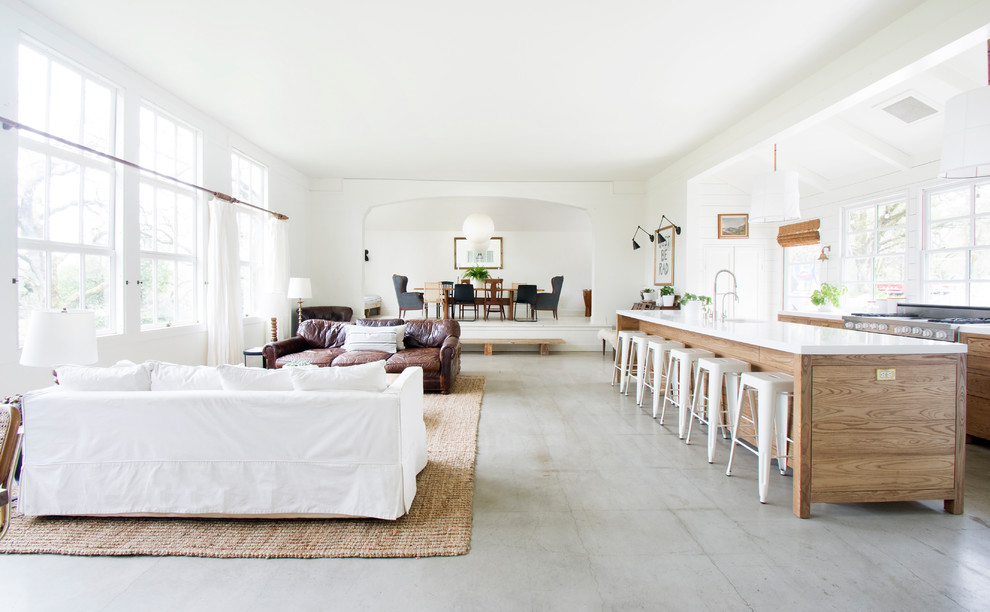
Image source: Pinterest
Cons of Cement Creed:
- Porous and thus attracts dirt
- The appearance of hairline cracks
- Needs to be covered
- High maintenance
VINYL
Vinyl is an all-in-one combo. It is available in many forms such as tiles, sheets, and even planks. It is best suited for wet areas like a bathroom as it is water-resistant. However, it isn’t eco-friendly as its composition includes PVC. An eco-friendlier alternative would be HERF-High-End resilient flooring. It is a replication of wood and is made from virgin pulp, therefore a much safer option.
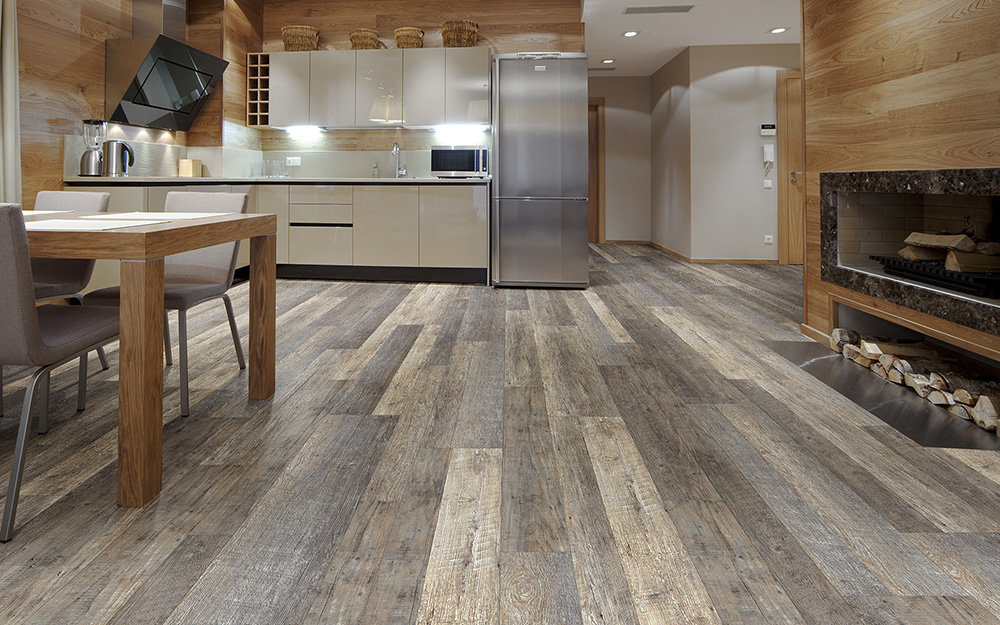
Image source: Pinterest
Pros of Vinyl:
- Water-resistant
- Durable
- Cost-effective
- Suitable for bathroom
- Scratch-resistant
- Gives a wooden look
- Availability of many designs
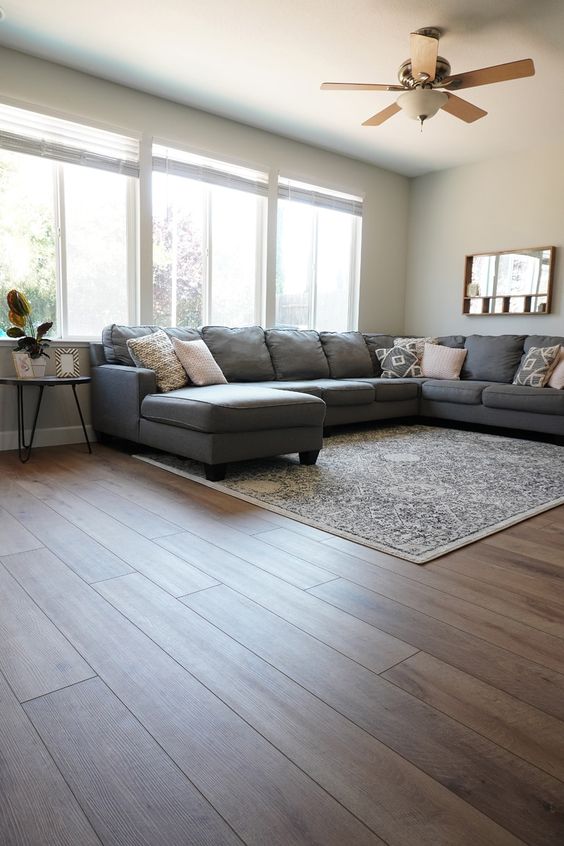
Image source: Pinterest
Cons of Vinyl:
- Not eco-friendly
So these are the flooring options that are available for you to choose from. Instead of having the same flooring throughout the house, have a variety. You can have marble in the kitchen, wooden in the bedroom, and tiles in the hall as per your suitability. But make sure that there is a certain amount of uniformity so that it doesn’t look too heterogeneous. So go ahead and do it the right way and ‘floor’ everybody!!
Visit our iDesign for more such informative blogs.

